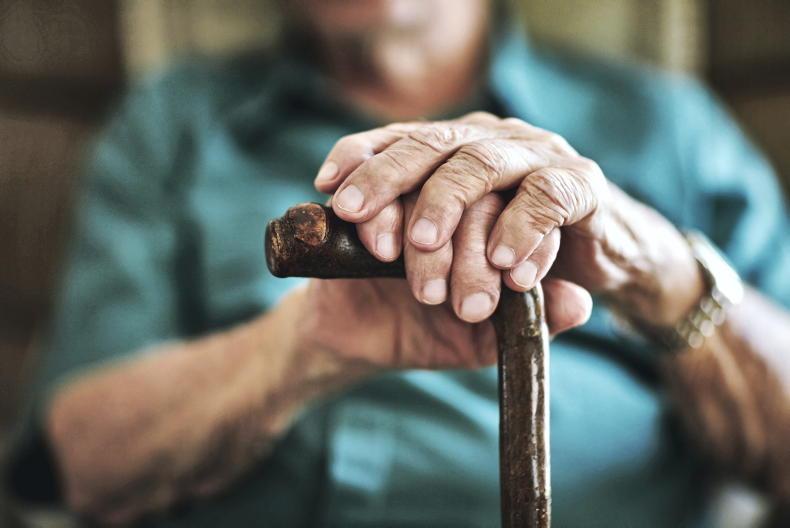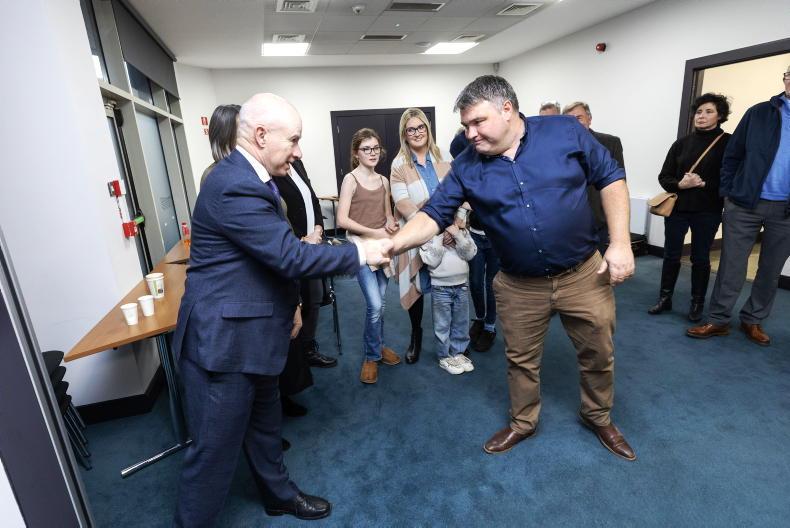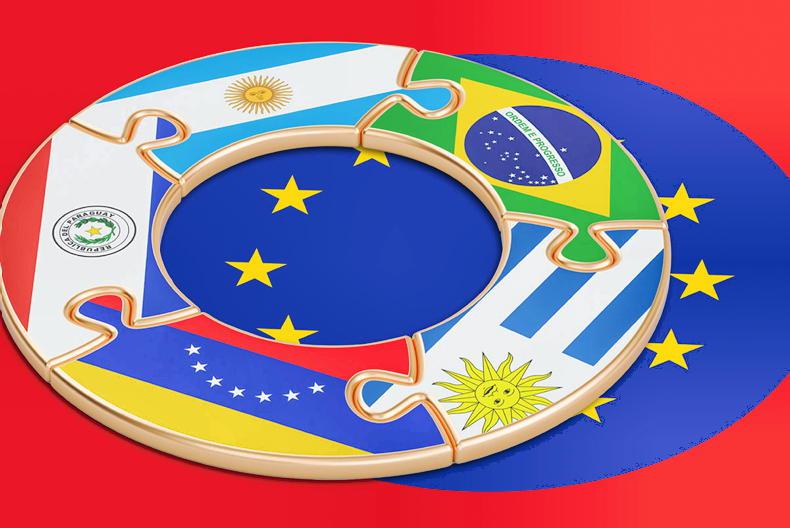When to vote
Voting in Ireland takes place on this Friday 7 June. Your local polling station will be open from 7am until 10pm, so you do have practically all day to vote.
You can only vote in your designated polling station. This should have been indicated on your voting card, which you should have received in the post by now.
Don’t forget to bring one of the types of proof of identity along, although in many rural areas people know each other and there is a reasonably relaxed approach to this element of control.
If you haven’t received a polling card, you can check to see if you are registered to vote here.
All you need is your name and Eircode or postal address (townland). This will also tell you where your polling station is.
The deadline has now passed to register for this week’s elections, but with a general election on the horizon, make sure to join the register if you aren’t already on it.
Voting for the European Parliament is spread over a number of days across the 27 member states.
In Estonia, polling stations actually opened on Monday and voting is taking place every day until Sunday.
Italy and the Czech Republic will see two days of voting. Ireland is the only country voting on Friday only.
Sunday next is the most popular day for voting, with 20 countries voting on that day alone and polling stations open in 22 countries.
How to vote
It’s very important to properly cast your ballot so your voice is heard. Some people choose to spoil their vote as a protest or statement about the sate of our politics - and this is a valid choice.
However, over 100,000 votes were deemed ineligible in the last European and local elections and it is believed that many of these were accidentally spoiled, so it’s important to have your wishes exercised.
The simple way to vote is to give your first preference vote to the candidate you most favour, by putting a number one in the box beside that candidate’s name and photograph.
Follow that by placing a number two beside the person you next most identify with and continue to vote your preferences down the list.
Make sure to remember that the two ballot slips you will be given are for two separate elections, so start with a number one vote for both local and European elections.
You don’t have to vote the whole way down the ballot for your vote to be valid, indeed a simple first preference will see your vote go to the candidate of your choice.
How your vote is counted
Ireland has a voting system known as the single transferable vote (STV). The STV is an extremely elegant method of exercising the democratic mandate, ensuring that wishes of the people are represented proportionately. This is why our electoral system is called proportional representation (PR).
The STV is designed for multi-seat constituencies in a system that sees smaller parties and independent candidates more heavily represented than in a first-past-the-post single-candidate electoral system, such as that used in the UK or the US. These systems tend to lead to a two-party system.
When your vote emerges from the ballot box at the count centre, it will be counted and allocated to the person you have given your number one or first preference vote to.
And your vote will stay with that candidate until they are either elected or eliminated. When all the votes have been allocated, the first count is now complete.
If candidates have exceeded the quota - which is the number of votes needed to be elected - they are deemed elected and this result is announced.
Their surplus vote - the number of votes the candidate received above the quota - is now distributed among the remaining candidates.
This is done by seeing who received the number two vote among the elected candidate’s ballots, allocating them proportionately to the remaining candidates. It is possible for a number of candidates to be elected on the first count.
If no one has exceeded the quota on the first count, then the lowest candidate is eliminated. All their votes are counted, with each one allocated to the candidate who received the number two preference.
Where no second preference is indicated, the vote is exhausted.
If the candidate receiving the second preference has already been elected or, in later counts, has already been eliminated, then that vote is allocated to the highest preference candidate still in the contest.
In later counts, this might mean that your vote is transferred on the basis of who received the 16th as opposed to the 17th preference. So your vote matters right through the contest.
Who is running?
There are no fewer than 73 candidates competing for the 14 seats available across three constituencies in the European elections. We have profiled the candidates in the two rural constituencies.
For Ireland South, click here.
For Midlands North West, see here.
The candidates contesting the four seats available in the Dublin constituency, which encompasses all of Co Dublin - including Dublin city, Fingal and Rathdown - are as follows:
Umar Al-Qadri - Independent.Barry Andrews - Fianna Fáil.Rebecca Barrett - The National Party.Lynn Boylan - Sinn Féin.Niall Boylan - Independent Ireland.Robin Cafolla - An Rabharta Glas.Aisling Considine - Aontú. Ciarán Cuffe - Green Party. Clare Daly - Independents4Change.Regina Doherty - Fine Gael.Daithí Doolan - Sinn Féin. Philip Dwyer - Ireland First.Sinéad Gibney - Social Democrats.Andy Heasman - The Irish People.Conor Murphy - Independent. Eamonn Murphy - Independent.Diarmaid Ó Conaráin - Irish Freedom Party.Brendan Ogle - Independent.Aodhán Ó Ríordáin - Labour. Stephen O'Rourke - Independent. Patrick Quinlan - The National Party. Bríd Smith - People Before Profit - Solidarity.Malachy Steenson - Independent. Local elections
In the local elections, there are over 2,000 candidates contesting the 949 seats up for grabs.
The Irish Farmers Journal has collated all the farming candidates right across the 166 electoral areas - you can see them here.
When to vote
Voting in Ireland takes place on this Friday 7 June. Your local polling station will be open from 7am until 10pm, so you do have practically all day to vote.
You can only vote in your designated polling station. This should have been indicated on your voting card, which you should have received in the post by now.
Don’t forget to bring one of the types of proof of identity along, although in many rural areas people know each other and there is a reasonably relaxed approach to this element of control.
If you haven’t received a polling card, you can check to see if you are registered to vote here.
All you need is your name and Eircode or postal address (townland). This will also tell you where your polling station is.
The deadline has now passed to register for this week’s elections, but with a general election on the horizon, make sure to join the register if you aren’t already on it.
Voting for the European Parliament is spread over a number of days across the 27 member states.
In Estonia, polling stations actually opened on Monday and voting is taking place every day until Sunday.
Italy and the Czech Republic will see two days of voting. Ireland is the only country voting on Friday only.
Sunday next is the most popular day for voting, with 20 countries voting on that day alone and polling stations open in 22 countries.
How to vote
It’s very important to properly cast your ballot so your voice is heard. Some people choose to spoil their vote as a protest or statement about the sate of our politics - and this is a valid choice.
However, over 100,000 votes were deemed ineligible in the last European and local elections and it is believed that many of these were accidentally spoiled, so it’s important to have your wishes exercised.
The simple way to vote is to give your first preference vote to the candidate you most favour, by putting a number one in the box beside that candidate’s name and photograph.
Follow that by placing a number two beside the person you next most identify with and continue to vote your preferences down the list.
Make sure to remember that the two ballot slips you will be given are for two separate elections, so start with a number one vote for both local and European elections.
You don’t have to vote the whole way down the ballot for your vote to be valid, indeed a simple first preference will see your vote go to the candidate of your choice.
How your vote is counted
Ireland has a voting system known as the single transferable vote (STV). The STV is an extremely elegant method of exercising the democratic mandate, ensuring that wishes of the people are represented proportionately. This is why our electoral system is called proportional representation (PR).
The STV is designed for multi-seat constituencies in a system that sees smaller parties and independent candidates more heavily represented than in a first-past-the-post single-candidate electoral system, such as that used in the UK or the US. These systems tend to lead to a two-party system.
When your vote emerges from the ballot box at the count centre, it will be counted and allocated to the person you have given your number one or first preference vote to.
And your vote will stay with that candidate until they are either elected or eliminated. When all the votes have been allocated, the first count is now complete.
If candidates have exceeded the quota - which is the number of votes needed to be elected - they are deemed elected and this result is announced.
Their surplus vote - the number of votes the candidate received above the quota - is now distributed among the remaining candidates.
This is done by seeing who received the number two vote among the elected candidate’s ballots, allocating them proportionately to the remaining candidates. It is possible for a number of candidates to be elected on the first count.
If no one has exceeded the quota on the first count, then the lowest candidate is eliminated. All their votes are counted, with each one allocated to the candidate who received the number two preference.
Where no second preference is indicated, the vote is exhausted.
If the candidate receiving the second preference has already been elected or, in later counts, has already been eliminated, then that vote is allocated to the highest preference candidate still in the contest.
In later counts, this might mean that your vote is transferred on the basis of who received the 16th as opposed to the 17th preference. So your vote matters right through the contest.
Who is running?
There are no fewer than 73 candidates competing for the 14 seats available across three constituencies in the European elections. We have profiled the candidates in the two rural constituencies.
For Ireland South, click here.
For Midlands North West, see here.
The candidates contesting the four seats available in the Dublin constituency, which encompasses all of Co Dublin - including Dublin city, Fingal and Rathdown - are as follows:
Umar Al-Qadri - Independent.Barry Andrews - Fianna Fáil.Rebecca Barrett - The National Party.Lynn Boylan - Sinn Féin.Niall Boylan - Independent Ireland.Robin Cafolla - An Rabharta Glas.Aisling Considine - Aontú. Ciarán Cuffe - Green Party. Clare Daly - Independents4Change.Regina Doherty - Fine Gael.Daithí Doolan - Sinn Féin. Philip Dwyer - Ireland First.Sinéad Gibney - Social Democrats.Andy Heasman - The Irish People.Conor Murphy - Independent. Eamonn Murphy - Independent.Diarmaid Ó Conaráin - Irish Freedom Party.Brendan Ogle - Independent.Aodhán Ó Ríordáin - Labour. Stephen O'Rourke - Independent. Patrick Quinlan - The National Party. Bríd Smith - People Before Profit - Solidarity.Malachy Steenson - Independent. Local elections
In the local elections, there are over 2,000 candidates contesting the 949 seats up for grabs.
The Irish Farmers Journal has collated all the farming candidates right across the 166 electoral areas - you can see them here.









SHARING OPTIONS